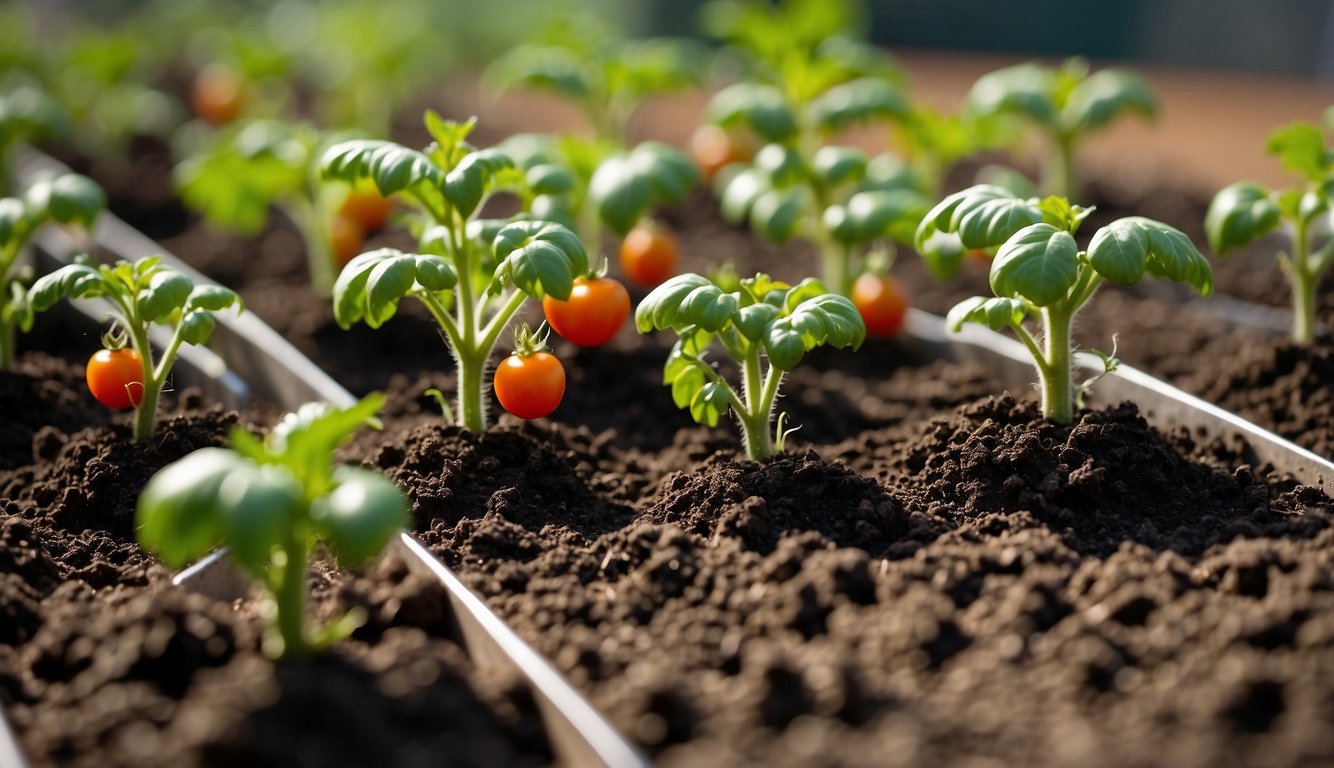TheHerbProf.com is a treasure trove of knowledge for those interested in natural healing and herbal remedies. The website is run by Paul Johnston MD. A naturopathic who has not only received extensive education in the field but also has personal experience in self-healing.
Growing tomatoes as perennials is a great way to save time and effort while enjoying a bountiful harvest year after year. Unlike annual tomatoes, perennial tomatoes can survive through the winter and grow back each spring. However, growing tomatoes as perennials requires some extra care and attention. But how to grow tomatoes as perennials?
To start, it is important to choose the right variety of tomato plant.
Some tomato varieties are better suited for perennial growth than others. For example, indeterminate tomato varieties tend to be more adaptable to perennial growth than determinate varieties.
Additionally, some heirloom tomato varieties, such as the Cherokee Purple, have been known to grow back year after year.
Another key factor in growing tomatoes as perennials is providing the right growing conditions.
Tomatoes need well-draining soil, full sun exposure, and plenty of water. It is also important to protect the plants from frost and cold temperatures during the winter months.
With the right care and attention, growing tomatoes as perennials can be a rewarding and easy way to enjoy fresh, homegrown tomatoes year after year.
Understanding Tomato Plant Basics – How to Grow Tomatoes as Perennials?
As a gardener, growing tomatoes as perennials is an exciting prospect. To understand how to grow tomatoes as perennials, it’s essential to know the basics of tomato plants.
Determinate vs Indeterminate Varieties
Tomato plants come in two main varieties: determinate and indeterminate.
Determinate varieties grow to a certain height and produce fruit within a specific time frame. They’re often referred to as “bush” tomatoes and are ideal for container gardening or small spaces.
Indeterminate varieties, on the other hand, continue to grow and produce fruit until the first frost. They’re often referred to as “vining” tomatoes and require staking or trellising.
Tomato Plant Lifecycle – How to Grow Tomatoes as Perennials?
Tomatoes are annual plants that complete their lifecycle within a year. They grow from a seed, produce fruit, and then die. However, with proper care, they can grow as perennials in the right conditions.
Tomatoes require full sun, well-draining soil, and consistent watering.
Anatomy of Tomato Plants
Tomato plants have several parts, including the stem, leaves, flowers, and fruit.
The stem is the main support structure of the plant and transports water and nutrients from the roots to the rest of the plant.
The leaves are responsible for photosynthesis, converting sunlight into energy for the plant.
The flowers are the reproductive organs of the plant and produce fruit.
The fruit of the tomato plant is the tomato itself, which comes in various sizes and colors depending on the variety.
Preparation for Perennial Growth – How to Grow Tomatoes as Perennials?
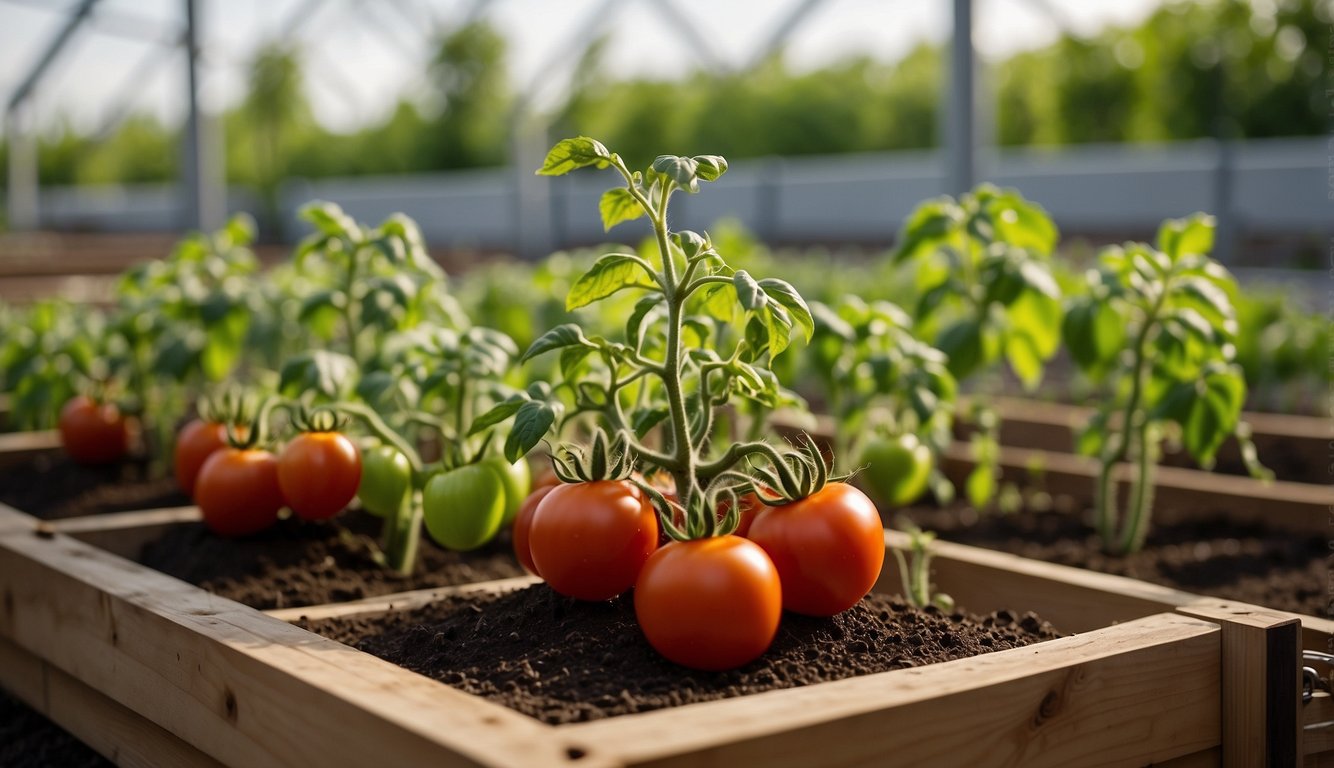
Growing tomatoes as perennials requires a bit of preparation, but it can be a rewarding experience. In this section, I will discuss the steps to take to prepare for perennial growth.
Choosing the Right Varieties
Selecting the right tomato varieties is crucial for perennial growth. Some varieties are more suitable for perennial growth than others.
For example, indeterminate varieties tend to be better suited for perennial growth than determinate varieties.
Indeterminate varieties continue to grow and produce fruit throughout the season, while determinate varieties stop growing once they reach a certain size and produce all their fruit at once.
Some good indeterminate tomato varieties for perennial growth include ‘Brandywine,’ ‘Cherokee Purple,’ and ‘Aunt Ruby’s German Green.’
Soil and Nutrient Requirements – How to Grow Tomatoes as Perennials?
Tomatoes require well-draining soil that is rich in organic matter. Before planting, amend the soil with compost and fertilizer to provide the necessary nutrients for the plants.
Adding a layer of mulch around the plants will help retain moisture and prevent weeds from growing.
Selecting the Ideal Location
Tomatoes require full sun to thrive, so it is important to select a location that receives at least 6-8 hours of direct sunlight per day.
Avoid planting tomatoes in areas that are prone to flooding or have poor drainage, as this can lead to root rot.
Planting Techniques – How to Grow Tomatoes as Perennials?
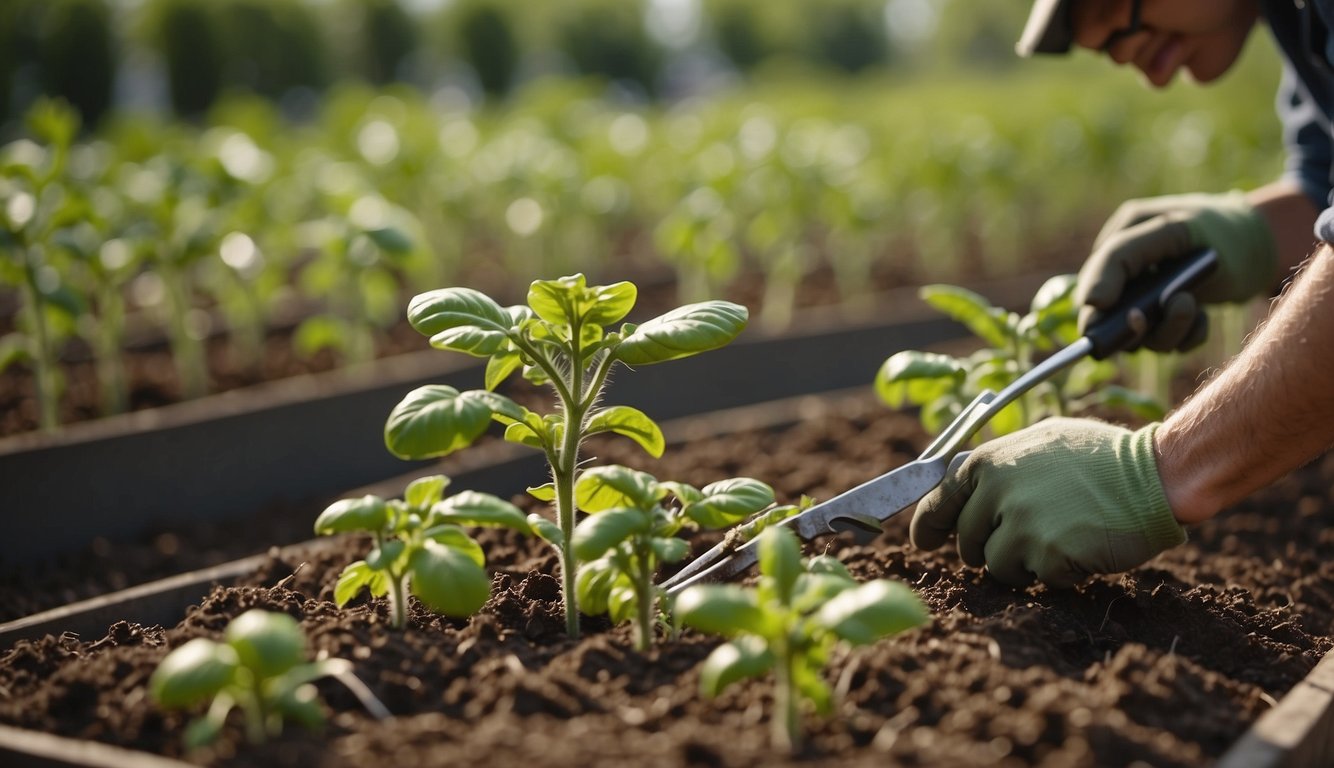
Growing tomatoes as perennials can be a rewarding experience for gardeners. In this section, I will discuss some planting techniques that will help you grow tomatoes as perennials successfully.
Seed Starting Indoors
Starting tomato seeds indoors is a great way to get a head start on the growing season.
You can start seeds indoors about 6-8 weeks before the last expected frost date in your area.
To start seeds indoors, fill a seed starting tray with a good quality seed starting mix. Moisten the mix and then plant the seeds about ¼ inch deep.
Keep the soil moist and warm, and the seeds should germinate in about 7-10 days.
Once the seedlings have their second set of leaves, you can transplant them to larger containers.
Transplanting to the Garden – How to Grow Tomatoes as Perennials?
When transplanting tomato seedlings to the garden, choose a sunny location with well-draining soil.
Tomatoes prefer a soil pH of 6.0-6.8.
Dig a hole that is deep enough to bury the entire stem of the plant. Remove the bottom leaves from the stem and place the plant in the hole.
Fill the hole with soil and gently firm the soil around the plant. Water the plant well.
Container Planting Considerations
Tomatoes can also be grown in containers.
Choose a container that is at least 18 inches in diameter and 24 inches deep. Fill the container with a good quality potting mix.
Plant one tomato plant per container. Water the plant regularly and fertilize every two weeks with a balanced fertilizer.
Mulch the soil surface to help retain moisture and suppress weeds.
Caring for Tomato Plants – How to Grow Tomatoes as Perennials?
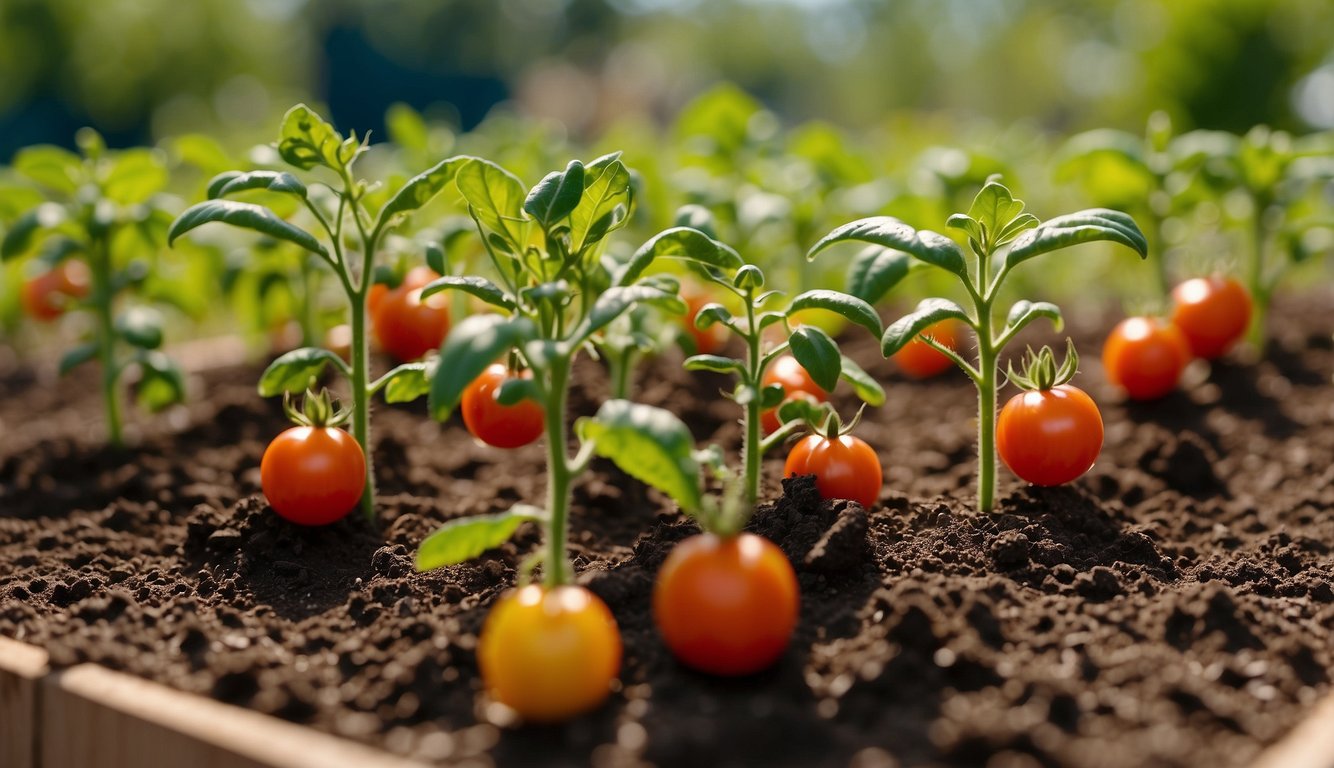
Growing tomatoes as perennials requires proper care and maintenance. Here are some essential care tips for tomato plants.
Watering and Irrigation
Tomatoes need consistent moisture to grow healthy and produce fruit.
As a general rule, tomato plants require 1 to 1.5 inches of water per week.
During hot and dry spells, you may need to supplement your tomato plants with an extra inch of water each week.
However, overwatering can lead to root rot and other fungal diseases. Therefore, it is essential to water your tomato plants deeply but infrequently.
Pruning and Training – How to Grow Tomatoes as Perennials?
Pruning and training are essential for growing tomatoes as perennials.
Training involves tying the main stem to a stake or cage to keep it upright and prevent it from breaking under the weight of the fruit.
Pruning involves removing suckers, which are the small shoots that grow between the main stem and the branches. Removing suckers helps to focus the plant’s energy on producing fruit.
Managing Pests and Diseases
Tomatoes are vulnerable to various pests and diseases, such as aphids and tomato hornworm.
To prevent infestations, you can use natural remedies such as neem oil or insecticidal soap.
Additionally, you can prevent diseases by providing good air circulation and avoiding overhead watering.
If you notice any signs of disease, such as yellowing leaves or spots on the fruit, remove the affected parts immediately to prevent the disease from spreading.
Extending the Growing Season – How to Grow Tomatoes as Perennials?
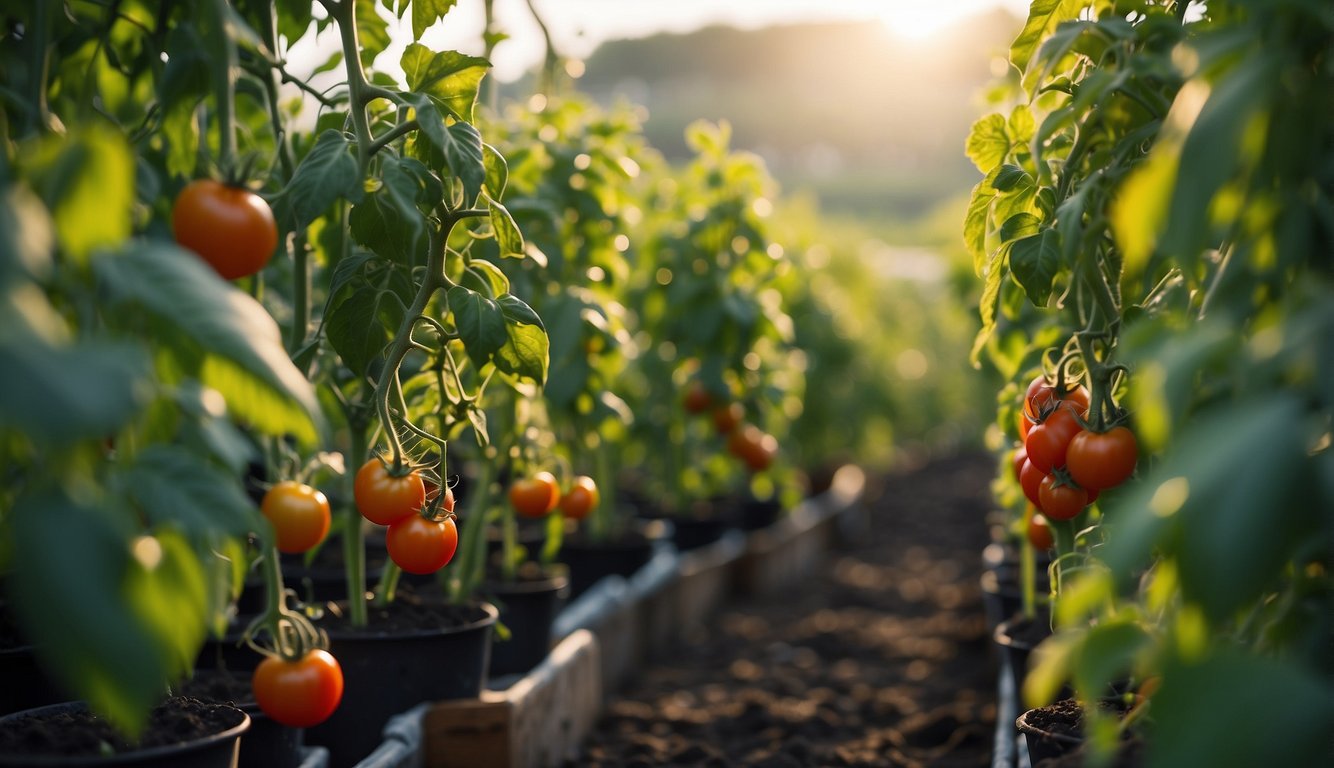
As a tomato enthusiast, I have always been fascinated by the idea of growing tomatoes as perennials. It is not only a sustainable way of gardening but also a great way to enjoy fresh tomatoes throughout the year.
One of the key aspects of growing tomatoes as perennials is to extend the growing season. In this section, I will share some techniques that will help you extend the growing season of your tomato plants.
Protecting from Frost
Frost is one of the biggest threats to tomato plants during the winter season. It can kill the plants and damage the fruits.
To protect your tomato plants from frost, you can cover them with blankets or tarps. You can also use row covers or cloths specifically designed for frost protection.
It is important to cover the plants before the temperature drops below freezing. You should also remove the cover during the day to allow sunlight to reach the plants.
Utilizing Greenhouses and Grow Lights
Greenhouses and grow lights are great tools for extending the growing season of tomato plants.
A greenhouse provides a controlled environment that protects the plants from extreme weather conditions.
You can also use grow lights to provide additional light to the plants during the winter season. This will help the plants continue to grow and produce fruits even when there is less sunlight.
Overwintering Techniques
Overwintering is the process of keeping the tomato plants alive during the winter season.
There are several techniques that you can use to overwinter your tomato plants.
One of the most common techniques is to dig up the plants and bring them indoors. You can keep them in a warm and well-lit room and continue to water them regularly.
Another technique is to prune the plants and cover them with mulch. This will protect the plants from extreme cold and help them survive the winter season.
Harvesting and Propagation – How to Grow Tomatoes as Perennials?
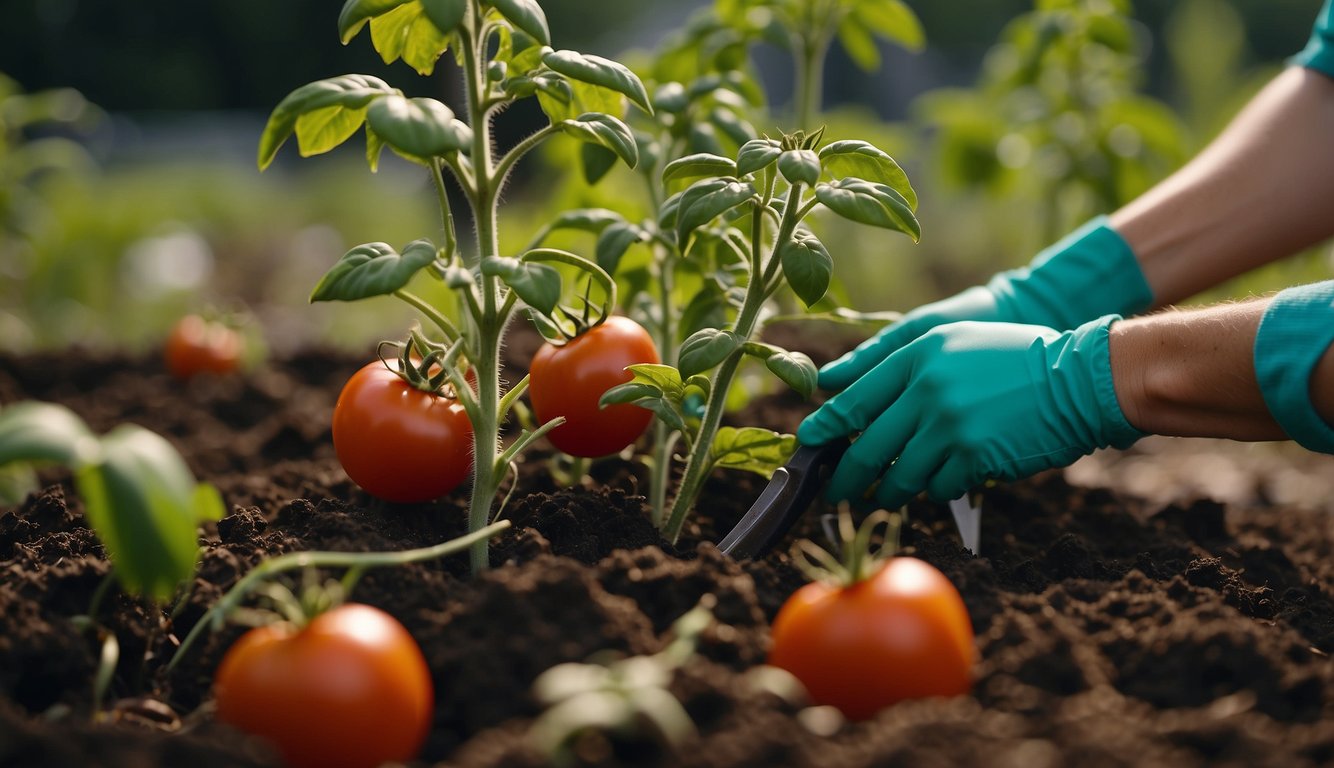
As a perennial, tomatoes can be harvested multiple times throughout the growing season. Here are some tips on picking ripe tomatoes, saving seeds for future planting, and propagating from cuttings.
Picking Ripe Tomatoes
When harvesting tomatoes, it’s important to pick them at the right time.
Ripe tomatoes should be firm but slightly soft to the touch, and have a rich color. If the tomato is still green, it will not ripen further once picked.
To pick a ripe tomato, gently twist it off the vine or use a pair of pruning shears to cut the stem just above the fruit.
Be careful not to damage the stem or any nearby fruit.
Saving Seeds for Future Planting
If you want to save seeds from your tomatoes for future planting, choose a healthy, ripe tomato and cut it open. Scoop out the seeds and place them in a jar or container with some water. Let the mixture sit for a few days, stirring occasionally, until a layer of mold forms on the surface.
This process, known as fermentation, helps to remove any germination inhibitors from the seeds.
After fermentation, pour off the mold and water, and rinse the seeds in a fine mesh strainer. Spread them out on a paper towel to dry for a few days, then store them in a cool, dry place until you’re ready to plant them.
Propagating from Cuttings
Another way to propagate tomatoes is by taking cuttings from an existing plant. Choose a healthy, non-flowering branch and cut it at a 45-degree angle with a clean, sharp pair of pruning shears. Remove any leaves from the bottom half of the cutting, and dip the cut end in rooting hormone powder.
Plant the cutting in a pot filled with moist potting soil, and cover it with a plastic bag to create a greenhouse effect. Keep the soil moist and place the pot in a warm, bright location, but out of direct sunlight.
In a few weeks, the cutting should start to develop roots and new growth. Once it’s established, you can transplant it to your garden.
Troubleshooting Common Issues – How to Grow Tomatoes as Perennials?
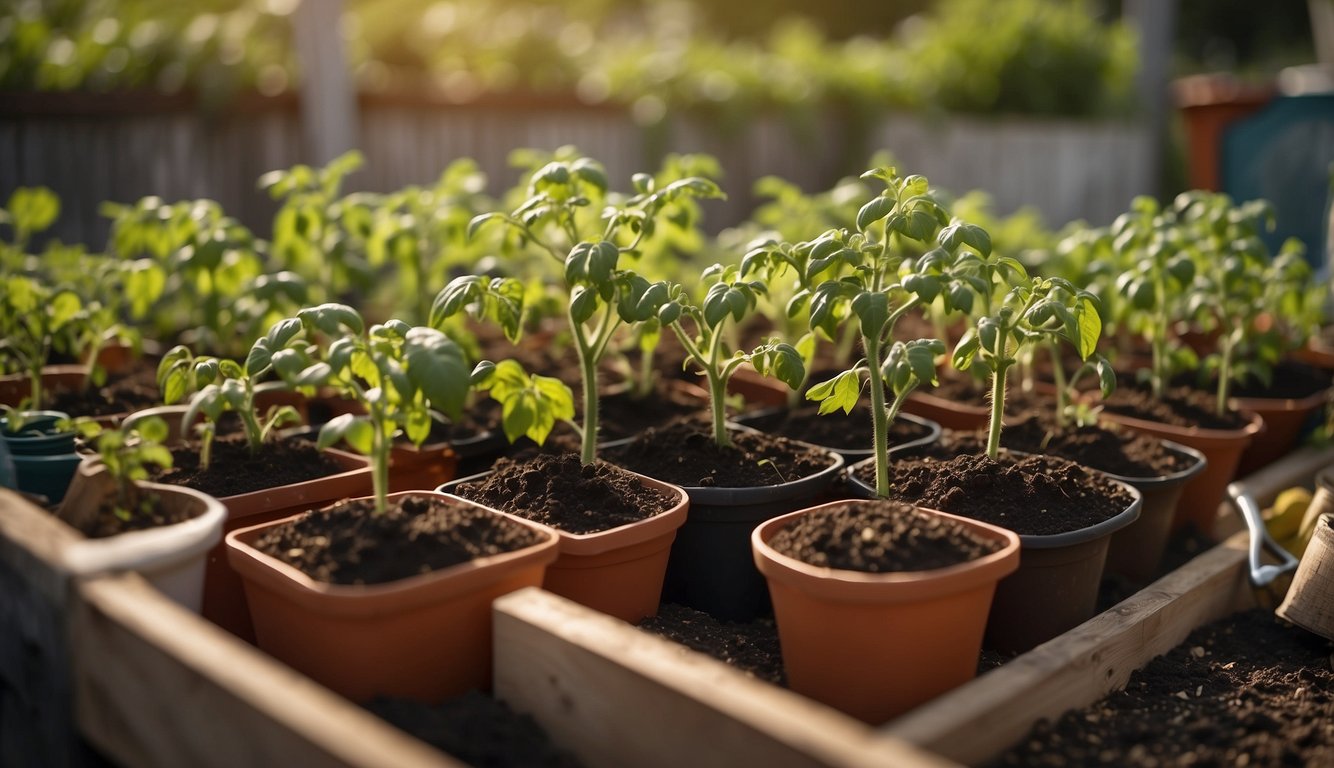
Growing tomatoes as perennials can be challenging, but with proper care, it is possible to enjoy fresh tomatoes year after year. However, even the most experienced gardeners can face common issues when growing tomatoes as perennials. Here are some of the most common issues and how to troubleshoot them.
Nutrient Deficiencies and Soil pH
One of the most common issues that gardeners face when growing tomatoes as perennials is nutrient deficiencies. Tomatoes require specific nutrients to grow and produce fruit, and if the soil is lacking in these nutrients, the plants will struggle.
Common nutrient deficiencies include iron, magnesium, and calcium.
To prevent nutrient deficiencies, it is essential to test the soil regularly and amend it as needed. You can also use fertilizers to provide the necessary nutrients.
Additionally, it is crucial to maintain the proper soil pH, which should be between 6.0 and 6.8 for optimal tomato growth.
Environmental Stress Factors
Environmental stress factors can also impact tomato growth and production. These factors include temperature fluctuations, inconsistent watering, and excessive humidity.
When tomato plants experience too much stress, they may drop flowers and fruit.
To prevent environmental stress factors, it is essential to maintain consistent growing conditions. This includes watering the plants regularly, providing adequate drainage, and controlling humidity levels.
Additionally, it is crucial to protect the plants from extreme temperatures by providing shade during the hottest parts of the day.
Dealing with Unexpected Weather Changes
Weather changes can also impact tomato growth and production. Unexpected frosts, heavy rain, and high winds can damage the plants and reduce fruit production.
To prevent weather-related issues, it is important to monitor the weather forecast and take steps to protect the plants as needed.
For example, you can cover the plants with blankets or tarps during unexpected frosts or provide additional support for the plants during high winds.
Additionally, you can provide extra water during periods of drought or heavy rain to prevent the plants from becoming stressed.
How to Grow Tomatoes as Perennials: A Herbalist’s Perspective
Today, we’re going to vine into a topic that’s as juicy as the tomatoes in our gardens – Growing Tomatoes as Perennials.
Now, you might be wondering, how do I grow tomatoes as perennials? Well, it’s simple. While tomatoes are typically grown as annuals, in warmer climates they can be grown as perennials. This means they can produce fruit year-round!
But here’s the fun part – growing tomatoes as perennials doesn’t just benefit your meals. It also benefits the soil. Tomato plants, with their deep roots, help to improve soil structure and fertility.
Now, let’s connect this back to our home page, theherbprof.com. Our website is all about celebrating the magic of herbs and exploring the wonderful world of herbalism. And guess what? By understanding the process of growing tomatoes as perennials, you’re contributing to this world in your own unique way.
So, next time you’re tending to your garden, remember to try growing some tomatoes as perennials. Not just for their juicy goodness, but also for their benefits to the soil. After all, a happy garden is a garden where all life forms live in harmony.
References – How to Grow Tomatoes as Perennials?
Little Herb Encyclopedia, by Jack Ritchason; N.D., Woodland Publishing Incorporated, 1995
The Ultimate Healing System, Course Manual, Copyright 1985, Don Lepore
Planetary Herbology, Michael Tierra, C.A., N.D., Lotus Press, 1988
Handbook of Medicinal Herbs, by James A. Duke, Pub. CRP Second Edition 2007
The Complete Medicinal Herbal, by Penelope Ody, Published by Dorling Kindersley
Check the Following Articles!
How Avocados Grow? A Comprehensive Guide
Propagating Tradescantia: Everything You Need To Know!
How to Grow Coffee? Tips Used By Top Coffeemakers
How Do Potatoes Grow in the Ground?
Frequently Asked Questions – How to Grow Tomatoes as Perennials?
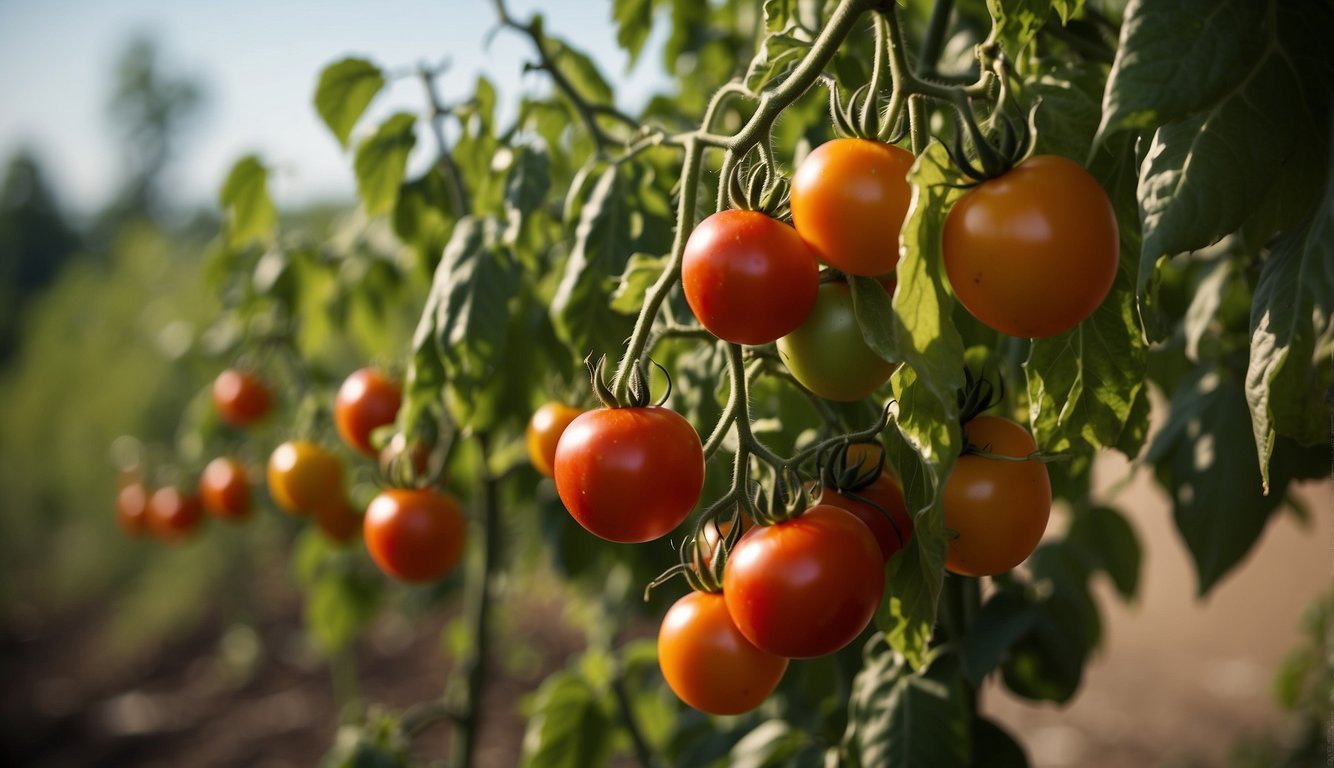
What steps are needed to overwinter tomato plants for perennial growth?
To overwinter tomato plants for perennial growth, there are a few steps that need to be followed.
First, the plants need to be pruned back to about a third of their original size. Second, they need to be transplanted into larger pots with fresh soil. Finally, they need to be placed in a cool, dark location with temperatures between 50-60°F (10-15°C) and watered sparingly.
With proper care, the plants will go dormant and then reemerge in the spring ready to produce fruit.
Can cherry tomato plants be cultivated to produce fruit annually?
Yes, cherry tomato plants can be cultivated to produce fruit annually. The process is similar to that of overwintering regular tomato plants.
Cherry tomato plants need to be pruned back and transplanted into larger pots with fresh soil. They also need to be placed in a cool, dark location with temperatures between 50-60°F (10-15°C) and watered sparingly.
With proper care, cherry tomato plants can produce fruit year-round.
What are the best practices for growing perennial tomatoes indoors?
Growing perennial tomatoes indoors requires proper lighting, temperature control, and watering.
Tomato plants need at least six hours of direct sunlight a day, so it is important to place them near a window or under grow lights.
The temperature should be kept between 60-75°F (15-24°C) during the day and 55-65°F (13-18°C) at night.
Watering should be done once the top inch of soil is dry. It is also important to fertilize the plants regularly with a balanced fertilizer.
How can one successfully grow tomatoes in pots year after year?
To successfully grow tomatoes in pots year after year, it is important to use fresh soil, fertilize regularly, and prune the plants to encourage new growth.
The pot should be at least 12 inches (30 cm) in diameter and filled with a high-quality potting mix.
Fertilize the plants every two weeks with a balanced fertilizer. Prune the plants regularly to remove dead or diseased leaves and encourage new growth.
What is the process for propagating tomatoes perennially from seed?
To propagate tomatoes perennially from seed, start by soaking the seeds in warm water for 24 hours before planting.
Plant the seeds in a high-quality potting mix and water regularly.
Once the seedlings have grown to about 4-6 inches (10-15 cm) tall, transplant them into larger pots with fresh soil.
As the plants grow, prune them to encourage new growth. Once the plants are established, they can be overwintered following the steps outlined earlier.
What are the necessary conditions for maintaining a winter greenhouse for tomatoes?
Maintaining a winter greenhouse for tomatoes requires proper temperature control, lighting, and ventilation.
The temperature should be kept between 50-60°F (10-15°C) during the day and 45-55°F (7-13°C) at night.
The greenhouse should also be equipped with grow lights to provide adequate lighting for the plants.
Ventilation is also important to prevent the buildup of moisture and mold.
It is also important to fertilize the plants regularly with a balanced fertilizer.
